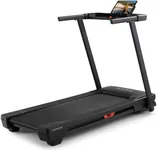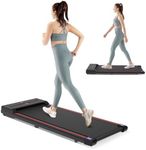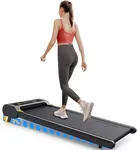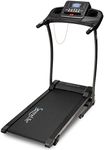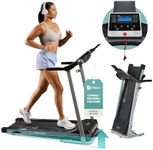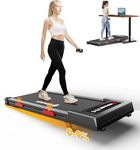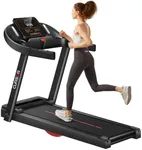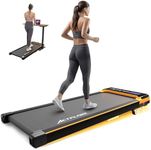Buying Guide for the Best At Home Treadmill
Choosing an at-home treadmill can be a great way to stay active and fit without leaving your house. The right treadmill for you depends on your fitness goals, available space, and how you plan to use it. Before making a decision, think about whether you want to walk, jog, or run, how much space you have for the treadmill, and any special features that might make your workouts more enjoyable or effective. Understanding the key specifications will help you find a treadmill that matches your needs and ensures a comfortable and safe exercise experience.Motor Power (Horsepower/HP)Motor power, usually measured in horsepower (HP), determines how smoothly and efficiently the treadmill runs, especially at higher speeds or with heavier users. A lower HP (around 1.5-2.0 HP) is generally suitable for walking, while moderate HP (2.0-2.5 HP) works well for jogging. If you plan to run regularly, look for a treadmill with 2.5 HP or higher. Consider your main activity—if you mostly walk, a lower HP is fine, but for running or multiple users, a stronger motor is better for durability and performance.
Running Surface SizeThe running surface, or belt size, affects how comfortable and safe your workouts will be. Shorter and narrower belts (around 16" x 50") are usually enough for walking, but for jogging or running, a longer and wider belt (at least 20" x 55") is recommended to give you more room for your stride. If you are taller or have a longer stride, opt for a larger running surface to avoid feeling cramped.
CushioningCushioning refers to the shock absorption system under the treadmill belt, which helps reduce the impact on your joints. Some treadmills have basic cushioning, while others offer advanced systems that can be adjusted. If you have joint concerns or plan to use the treadmill frequently, look for better cushioning to make your workouts more comfortable and reduce the risk of injury.
Incline OptionsIncline settings allow you to tilt the treadmill deck, simulating uphill walking or running. Manual incline requires you to adjust it by hand, while automatic incline lets you change it with a button. A higher maximum incline (up to 10-15%) offers more challenging workouts and helps target different muscle groups. If you want to burn more calories or add variety to your workouts, choose a treadmill with a good range of incline options.
Speed RangeThe speed range tells you how fast the treadmill can go. For walking, a top speed of 6-8 mph is usually enough. For jogging or running, look for treadmills that reach at least 10-12 mph. Think about your fitness level and goals—if you only plan to walk, you don’t need a high top speed, but runners should look for a treadmill that can keep up with their pace.
Foldability and StorageFoldable treadmills are designed to save space when not in use, making them ideal for smaller homes or apartments. Some fold up easily with hydraulic systems, while others may require more effort. If you have limited space or need to move the treadmill often, consider a model that folds and has wheels for easy storage.
Weight CapacityWeight capacity indicates the maximum user weight the treadmill can safely support. Most home treadmills support between 200-300 lbs, but some heavy-duty models go higher. Always choose a treadmill with a weight limit that comfortably exceeds your own weight to ensure safety and longevity of the machine.
Console FeaturesThe console includes the display and controls for speed, incline, and workout programs. Some treadmills offer basic displays with time, distance, and calories, while others have touchscreens, Bluetooth, speakers, or app connectivity. If you enjoy tracking your progress or want entertainment while exercising, look for a treadmill with the features that matter most to you.
